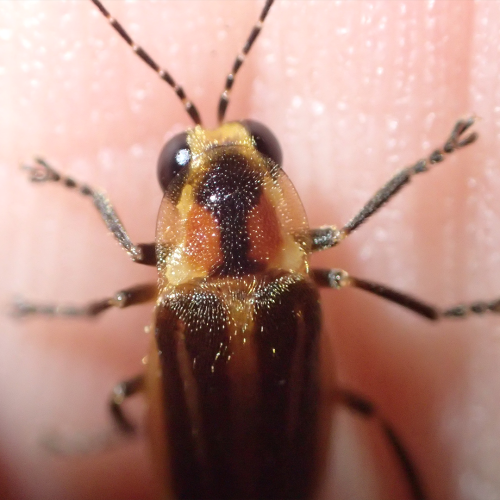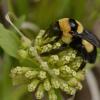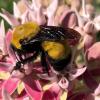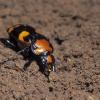
Activity Period and Flash Signal
Adults are active late June to July. Males emit a distinctive bright green double flash about every five seconds.
This species has a very narrow distribution along the Atlantic Coast of Delaware and Maryland.
The Bethany Beach firefly is a habitat specialist associated with threatened freshwater interdunal wetlands that occur along the Atlantic coast in Delaware and Maryland. These habitats form in barrier beach systems in the shallow depressions found between sand dunes. While brackish swales can be found all along the east coast, freshwater swales are less common, characterized by saturated soils that are seasonally inundated by freshwater from aquifers and recharged with rainfall. Organic matter that builds up in the swales provides habitat for Bethany Beach firefly larvae, which hunt along the soil surface and pupate in chambers just under the soil surface or under logs.
- IUCN Red List status: Critically Endangered
- NatureServe status: G1 – Critically Imperiled, S1 (Delaware, Maryland)
- U.S. Endangered Species Act status: Petitioned in May 2019, positive 90-day finding in Dec 2019, currently under review
- Delaware State Endangered Species Act status: Endangered
Currently, the most significant threat to this species is habitat loss and fragmentation due to coastal development. You can read more about this threat on our blog. Other threats to this species include decreased water quality, recreational activities and related infrastructure, habitat fragmentation, light pollution, pesticides, and climate change-induced sea level rise, increased incidence of severe storms, and increased temperatures and phenological shifts (changes in the timing of a species’ life cycle events). Loss of larval prey species, invasive plants such as the common reed (Phragmites australis), and disease or predation may be impacting the Bethany Beach firefly as well.
- We need to know more about the distribution of this species. Please check out the Firefly Atlas to help us track and conserve this threatened species.
- Help protect this species’ habitat by accessing the beach using established trails; do not walk on or otherwise trample fragile dune and wetland habitats that may be supporting this species.
- Habitat restoration and monitoring of freshwater aquifers at known sites will help ensure this species remains extant.
- Turn off your outdoor lights at night so the lights of this firefly aren’t diminished by light pollution. You can read more about firefly-friendly lighting in our fact sheet.
- Avoid pesticide use, which could harm this firefly, its habitat, or its prey.
Candace Fallon, The Xerces Society for Invertebrate Conservation, based on the IUCN Red List assessment





